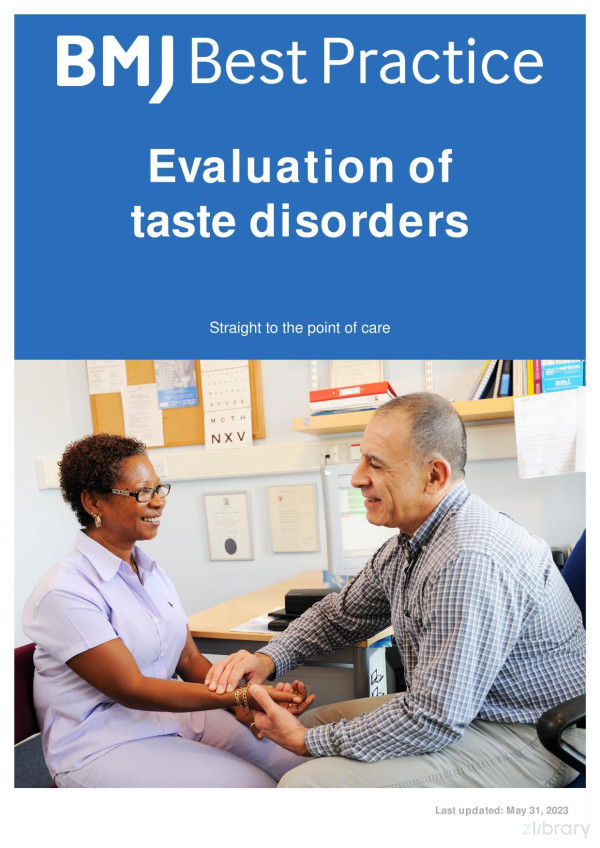

Most ebook files are in PDF format, so you can easily read them using various software such as Foxit Reader or directly on the Google Chrome browser.
Some ebook files are released by publishers in other formats such as .awz, .mobi, .epub, .fb2, etc. You may need to install specific software to read these formats on mobile/PC, such as Calibre.
Please read the tutorial at this link: https://ebookbell.com/faq
We offer FREE conversion to the popular formats you request; however, this may take some time. Therefore, right after payment, please email us, and we will try to provide the service as quickly as possible.
For some exceptional file formats or broken links (if any), please refrain from opening any disputes. Instead, email us first, and we will try to assist within a maximum of 6 hours.
EbookBell Team

4.7
66 reviewsperception accompanying oral intake. Taste comprises five basic taste qualities: sweet, bitter, salty, sour,
and umami.[1] Umami (pleasant, good, desirable taste) is the perception of monosodium glutamate; its taste
resembles that of chicken bouillon.[2]
Additional taste functions have been identified, including fat "taste" that may be mediated by receptor
transduction and nonspecific transport across the cell membrane and spicy "sensation" (e.g., capsaicin,
ginger) mediated by sensory afferent fibers.[3] A receptor resulting in kokumi taste that enhances other flavor
sensations, and a "water" receptor have also been described.[4] [5] [6] [7]
However, the common sense of the word "taste" often means "flavor," which in turn is a composite of several
(nongustatory) chemosensory afferents including taste, spice, texture, temperature (both mediated by the
trigeminal nerve - i.e., cranial nerve V), vision and importantly, olfaction (more precisely, retro-olfaction)
perceived while eating.[1] [8] [9] As such, a patient's complaints about taste loss do not always reflect the
underlying pathology. Taste testing is mandatory to exclude a primary olfactory or trigeminal nerve pathology
that manifests clinically to the patient as a problem with taste.
According to testing with taste strips, 5.3% of people considered as healthy have hypogeusia although very
few have complete ageusia.[10] The evaluation of a patient presenting with taste dysfunction comprises the
patient's history (including medical history, drug intake and dietary/nutritional elements), a detailed clinical
exam (including oral exam), and investigations to determine the underlying etiology.